User-generated content (UGC) is quickly becoming the cornerstone of effective marketing strategies.
In fact, according to recent studies, 92% of consumers trust recommendations from friends and family over any other form of advertising.
Additionally, UGC has been shown to increase conversion rates by up to 10% and improve website engagement by as much as 20%.
These statistics highlight the tremendous potential of UGC as a tool for businesses looking to build brand loyalty, drive engagement and reach new audiences.
In this ultimate guide to UGC marketing, we will explore the various forms of UGC, the benefits it offers, and provide actionable user-generated content tips and real-life examples to help you effectively leverage UGC in your digital marketing efforts.
Whether you’re a seasoned marketer or just starting out, this guide is a comprehensive resource that will provide you with the tools, user-generated content marketing examples, and insights you need to take your UGC marketing strategy to the next level.
So this begs the question:
Table of Contents
- What is user-generated content?
- Why is user-generated content so important
- Statistics on user-generated content for 2023
- User-generated content vs. branded content
- Millennials and user-generated content
- Gen Z and user-generated content
- Types of user-generated content
- User-generated content ideas: how to make UGC?
- User generated content trends
- User-generated content marketing checklist
- User-generated content tools for Shopify
- Summary
- FAQ: User-generated content guide
- Is UGC good for SEO?
What is user-generated content?
User-generated content (UGC) refers to any content created by users on a website, app, or platform rather than by the official creators or publishers of the platform.
This includes, but is not limited to, reviews, comments, photos, videos, and posts.
Great examples of consumer-generated media include:
- Reviews on eCommerce websites like Amazon, where customers can rate and review products they have purchased
- Social media posts on platforms like Instagram, Twitter, and Facebook
- User-created videos on platforms like YouTube
- User-generated forums on websites like Reddit and Quora
- User-created maps in map-based games like Minecraft
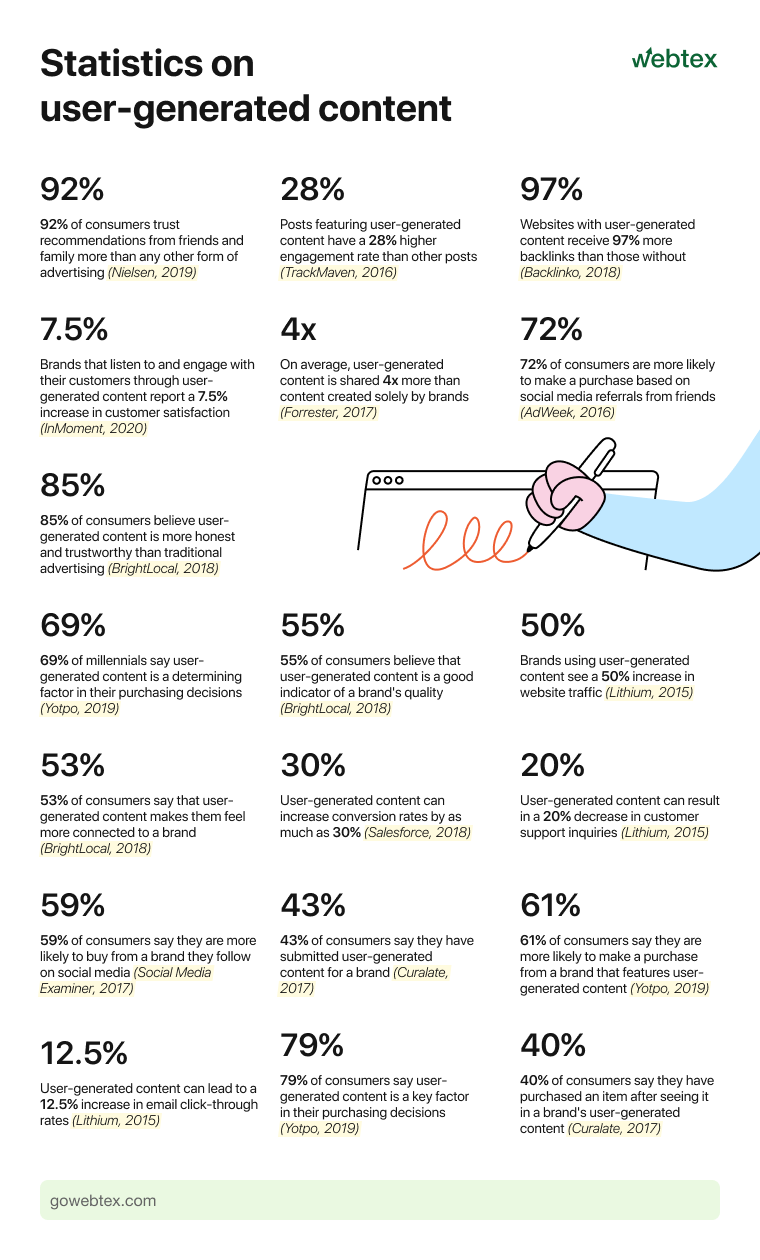
Why is user-generated content so important
If you are wondering, “why is content moderation important for user-generated campaigns,” here are five reasons why UGC is important, supported by statistics:
Authenticity
UGC provides a more authentic representation of a brand or product. 92% of consumers trust recommendations from friends and family more than any other form of advertising. (Nielsen)
Increased engagement
UGC can drive higher levels of engagement and interaction with a brand or product. Posts featuring consumer-generated media have a 28% higher engagement rate than other posts. (TrackMaven)
Better SEO
User-generated content can improve search engine optimization (SEO) and boost a brand’s online visibility. Websites with such content receive 97% more backlinks than those without. (Backlinko)
Customer insight
UGC provides valuable insights into customer preferences, opinions, and feedback. Brands that listen to and engage with their customers through UGC report a 7.5% increase in customer satisfaction. (InMoment)
Viral potential
UGC has the potential to go viral, increasing brand exposure and reach. On average, consumer-generated media is shared 4x more than content created solely by brands. (Forrester)
In conclusion, UGC is a powerful tool for brands and businesses looking to increase engagement, authenticity, and customer insights and to drive better SEO and viral reach.
Statistics on user-generated content for 2023
- 92% of consumers trust recommendations from friends and family more than any other form of advertising (Nielsen, 2019)
- Posts featuring UGC have a 28% higher engagement rate than other posts (TrackMaven, 2016)
- Websites with UGC receive 97% more backlinks than those without (Backlinko, 2018)
- Brands that listen to and engage with their customers through consumer-generated media report a 7.5% increase in customer satisfaction (InMoment, 2020)
- On average, consumer-generated media is shared 4x more than content created solely by brands (Forrester, 2017)
- 72% of shoppers are more likely to make a purchase based on social media referrals from friends (AdWeek, 2016)
- 85% of consumers believe UGC is more honest and trustworthy than traditional advertising (BrightLocal, 2018)
- 79% of buyers say user-generated media is a key factor in their purchasing decisions (Yotpo, 2019)
- 40% of consumers say they have purchased an item after seeing it in a brand’s consumer-generated media (Curalate, 2017)
- 69% of millennials say UGC is a determining factor in their purchasing decisions (Yotpo, 2019)
- 55% of shoppers believe that user-generated content is a good indicator of a brand’s quality (BrightLocal, 2018)
- Brands using UGC see a 50% increase in website traffic (Lithium, 2015)
- 57% of consumers are more likely to consider a brand if they see user-generated content from it (BrightLocal, 2018)
- 53% of buyers say that such content makes them feel more connected to a brand (BrightLocal, 2018)
- UGC can increase conversion rates by as much as 30% (Salesforce, 2018)
- Consumer-generated media can result in a 20% decrease in customer support inquiries (Lithium, 2015)
- 59% of consumers say they are more likely to buy from a brand they follow on social media (Social Media Examiner, 2017)
- 43% of shoppers say they have submitted UGC for a brand (Curalate, 2017)
- 61% of consumers say they are more likely to make a purchase from a brand that features UGC (Yotpo, 2019)
- User-generated content can lead to a 12.5% increase in email click-through rates (Lithium, 2015)
User-generated content vs. branded content
Consumer-generated media and branded content are two different forms of content created for eCommerce marketing purposes.
User-generated content is any content that is created by users of a website, app, or platform rather than by the official creators or publishers of the platform.
It is often unsponsored and created organically by individuals who are passionate about a product, brand, or topic.
Branded content, on the other hand, is content that is created and sponsored by a brand or company. It is designed to promote the brand, increase brand awareness, and drive engagement with the target audience.
Branded content can take many forms, including articles, videos, podcasts, and social media posts.
💡 The key difference between UGC and branded content is that UGC is created by individuals and is typically unsponsored, while branded content is created by a brand or company with the intention of promoting their brand.
Both UGC and branded content play important roles in marketing, but UGC is often seen as more trustworthy and authentic, while branded content is seen as more controlled and biased.
Millennials and user-generated content
Millennials, those born between 1981 and 1996, have come of age in an era of rapid technological advancement. This generation has grown up with the Internet and social media, and as a result, they are the pioneers of user-generated content.
According to a recent study, 92% of millennials trust recommendations from their peers over traditional advertisements.
This generation values authenticity and transparency in the brands they support, and UGC provides a way for them to see a brand through the eyes of their peers.
User-generated content is an important factor in the purchasing decisions of millennials, who value authenticity and trust the recommendations of their peers.
Brands can certainly leverage UGC to reach this demographic, but it’s essential to approach it in an ethical and transparent manner.
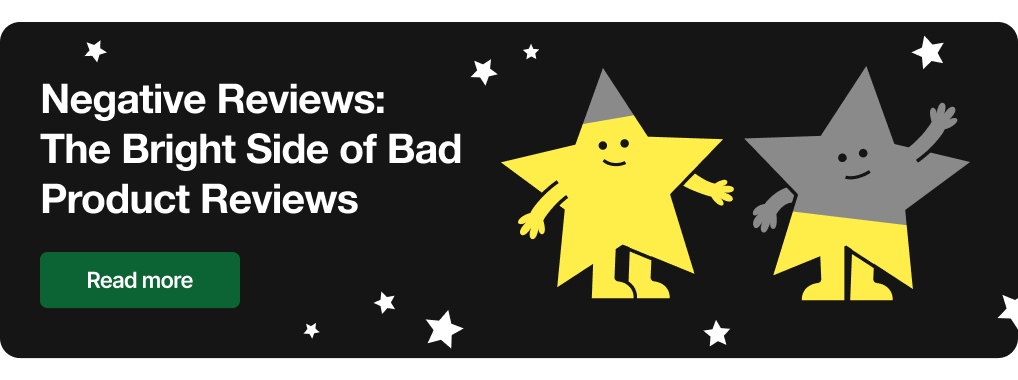
Gen Z and user-generated content
Generation Z, those born between 1997 and 2012, are the true digital natives who have grown up in a world where technology and social media play a significant role in their daily lives.
This has resulted in a strong engagement with UGC, which has become a trusted source of information and influencer of purchasing decisions for this demographic.
According to a recent study, 72% of Gen Z consumers trust UGC more than traditional advertisements as UGC provides them with a window into the experiences of their peers.
Another study found that 86% of Gen Z consumers are more likely to become repeat customers after seeing positive UGC about a brand.
Besides, according to a survey, 80% of Gen Z consumers said they would stop using a brand if they found out it was manipulating UGC.
Types of user-generated content
UGC is becoming increasingly popular as a marketing tool, as it can increase engagement and build trust with customers.
Here are the different types of UGC:
- Social media posts: Social media UGC can include text updates, images, and videos shared on platforms like Facebook, Twitter, Instagram, and TikTok.
- Reviews and ratings: Customers can leave reviews and ratings on a brand’s website, social media, or third-party review sites such as Yelp, TripAdvisor or Trustpilot.
- Images and videos: Customers can create and share images and videos showcasing their experiences with a brand’s products or services. This type of UGC is often shared on social media or on a brand’s website.
- Engaging blog posts and articles: Customers can write and share blog posts or articles about their experiences with a brand. These can be shared on a brand’s website, social media, or third-party blogging platforms such as Medium.
- Customer testimonials: Customer testimonials can be written or recorded and shared on a brand’s website, social media, or through email marketing campaigns.
- Questions and answers: Customers can ask and answer questions on a brand’s website or social media. This type of UGC can help other customers make informed purchasing decisions.
- Influencer collaborations: Brands can collaborate with influencers to create UGC in the form of sponsored posts or videos.
These are just a few examples of the many possible UGC campaigns.
User-generated content ideas: how to make UGC?
Here are ten customer-generated content ideas to help you get started:
- Product reviews:
Encourage customers to leave media reviews on your website or social media channels about the products they have purchased from your business.
- Social media contests:
Run a contest on your social media channels where users can submit original content in exchange for a prize.
- Customer stories:
Share stories from customers about how your products or services have made a positive impact in their lives.
- Q&A sessions:
Host a Q&A session on social media or through email where customers can ask questions about your products or services and receive answers from your team.
- User-generated videos:
Encourage customers to create and share videos about their experiences using your products or services.
- Photo or image contests:
Ask customers to submit their own photos or images that showcase your products or services in creative and unique ways.
- Surveys:
Conduct surveys to gather feedback and opinions from your customers about your products or services.
- Branded hashtag campaigns:
Encourage customers to use a specific hashtag when sharing their experiences or images related to your business.
- Customer testimonials:
Collect testimonials from customers about their experiences with your products or services and share them on your website or social media channels.
- Blog contributions:
Invite customers to write guest posts or contribute to your blog on topics related to your products or services.
User generated content trends
Let’s explore the latest trends in UGC and how they are shaping the future of marketing:
- Increased focus on authenticity: Authenticity is key in UGC marketing, and brands are placing a greater emphasis on this in their campaigns. Consumers are more likely to trust and engage with content that is real and relatable, and UGC provides the perfect platform for this. Brands are now looking for ways to encourage users to create authentic content that is representative of their real experiences.
- Emergence of micro-influencer marketing: Micro-influencer marketing is a new trend that is quickly gaining popularity. Brands are partnering with micro-influencers who have a smaller, but highly engaged, following on social media. This allows brands to reach a targeted audience in a more personal and authentic way, and also saves money compared to traditional influencer marketing.
- Social media is the new frontier: Social media platforms are becoming the go-to place for UGC marketing campaigns. Brands are using platforms like Instagram, Facebook, and TikTok to encourage users to create and share content that promotes their products or services. This not only increases reach and engagement, but also helps to build a community around the brand.
- Rise of user-generated video: Video content is becoming increasingly popular and is set to dominate the world of UGC. Brands are now encouraging users to create videos that showcase their products or services in a fun and engaging way. Video UGC has the added benefit of being highly shareable, which increases reach and engagement.
- Empowering customers: Brands are now recognizing the importance of empowering customers to create and share content. By giving customers the tools and resources they need, brands can create a sense of community and build trust with their target audience. This also allows customers to become advocates for the brand, helping to increase reach and engagement.
User-generated content marketing checklist
If you’re considering incorporating a user-generated content marketing strategy, it’s important to have a clear plan in place.
Here’s a comprehensive checklist to help you get started:
Define your goals and objectives
Before launching your UGC campaign, it’s important to have a clear understanding of what you hope to achieve.
Your user-generated content goals could include:
- Increasing brand awareness
- Driving engagement
- Building customer loyalty, or
- Boosting sales.
Identify your target audience
Understanding who your target audience is and what types of content they are most likely to engage with will help you create a UGC campaign that resonates with them.
Decide on the types of content to collect
UGC can take many different forms, including photos, videos, testimonials, reviews, and more.
Consider what types of content align best with your goals and target audience.
Choose the appropriate platforms
There are many different platforms where you can collect and share UGC, including social media, websites, and mobile apps.
Consider where your target audience is most active and choose platforms that make the most sense for your brand.
Create clear guidelines
To ensure that your UGC campaign runs smoothly, it’s important to establish clear guidelines for what types of content are acceptable and what types of content will not be accepted.
This will help you maintain control over the tone and messaging of your campaign.
Encourage participation
To encourage users to participate in your UGC campaign, consider offering incentives such as discounts, free products, or special promotions.
You could also run contests or sweepstakes to drive engagement and increase participation.
Monitor and moderate content
Once your UGC campaign is up and running, it’s important to monitor and moderate the content that is being shared.
This will help you ensure that the content aligns with your brand and marketing goals and that it is not inappropriate or offensive.
Measure success
To determine the effectiveness of your UGC campaign, it’s important to track key metrics such as engagement, reach, and conversions.
Use this data to make informed decisions about future UGC marketing efforts.
User-generated content tools for Shopify
For Shopify store owners, incorporating user-generated content marketing software into their online presence can be a game-changer.
Shopify offers various consumer-generated media apps that can help businesses boost engagement and drive sales.
Here are six of the best UGC tools for Shopify:
Webtex Product Reviews app
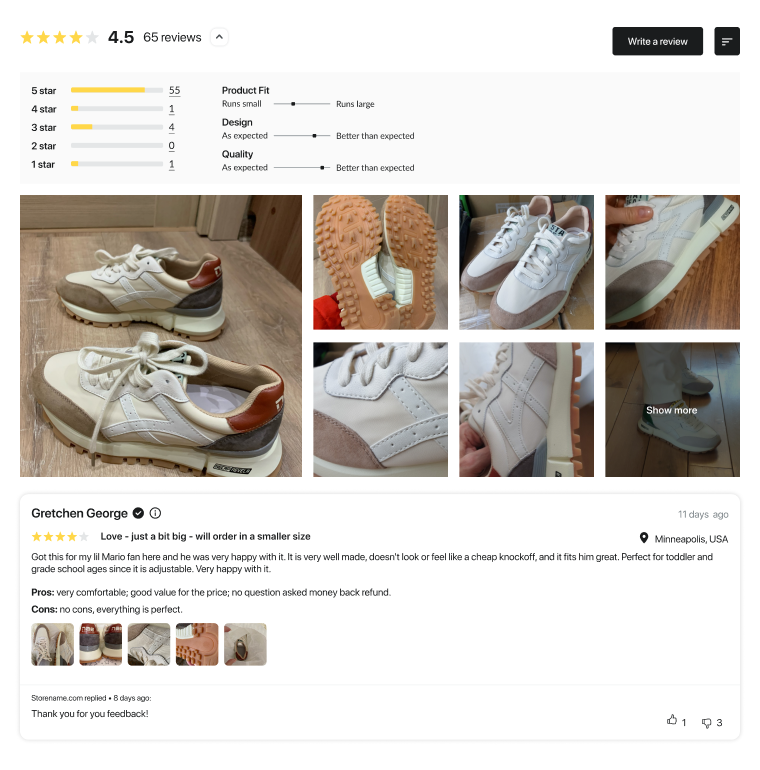
The Webtex Product Reviews app is an excellent UGC tool that enables customers to leave reviews and ratings on products. The app is simple to install, and it integrates seamlessly with Shopify stores. It offers features such as review moderation, email notifications, and the ability to display reviews on product pages, making it an excellent tool for Shopify store owners looking to leverage UGC.
Yotpo
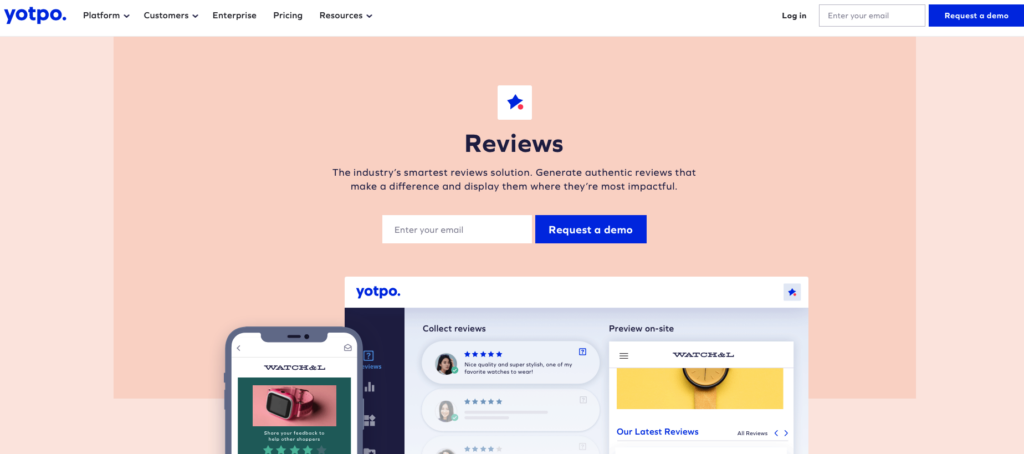
Yotpo is a powerful UGC platform that helps businesses gather and display customer reviews, ratings, photos, and videos. It offers advanced features such as review and photo submission pop-ups, email collection, and a review moderation dashboard, making it easy to manage and display customer feedback.
Social Photos
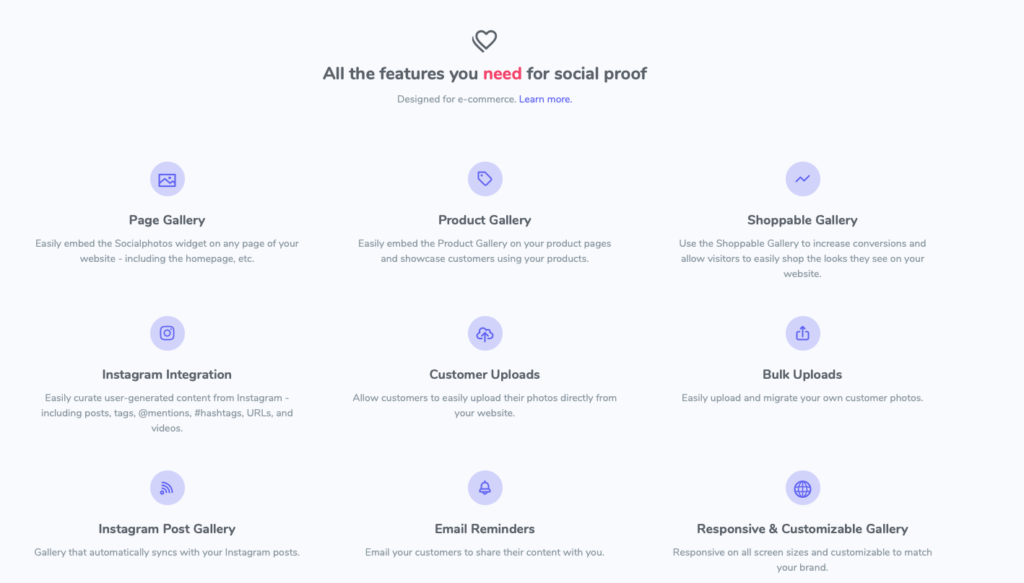
Social Photos is a Shopify app that enables customers to upload photos of themselves using your products. This UGC tool is great for businesses that want to showcase their products in real-life settings and provide customers with inspiration on how to use them.
Loox
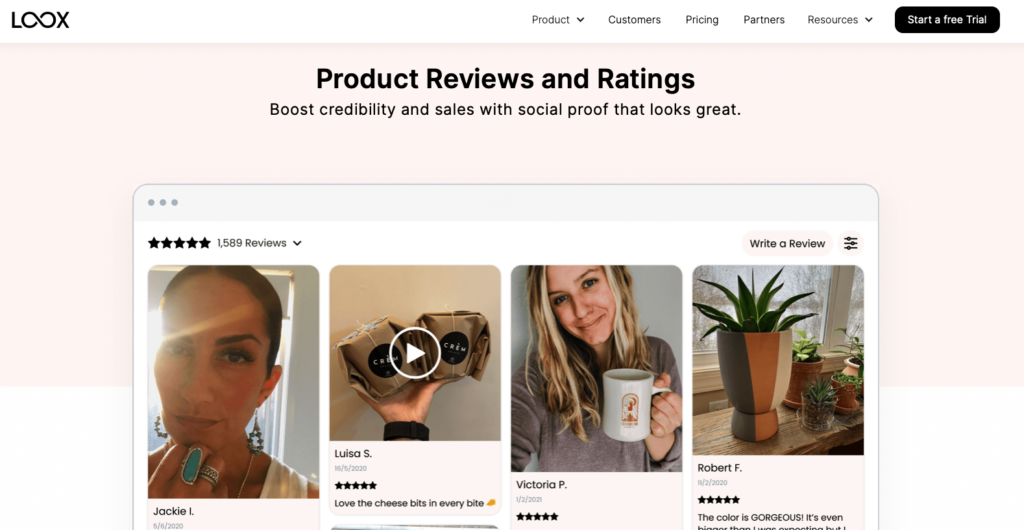
Loox is a Shopify app that enables customers to leave reviews, photos, and videos of products they’ve purchased. It offers a range of customization options, including review request templates, email reminders, and photo moderation tools.
Product Reviews
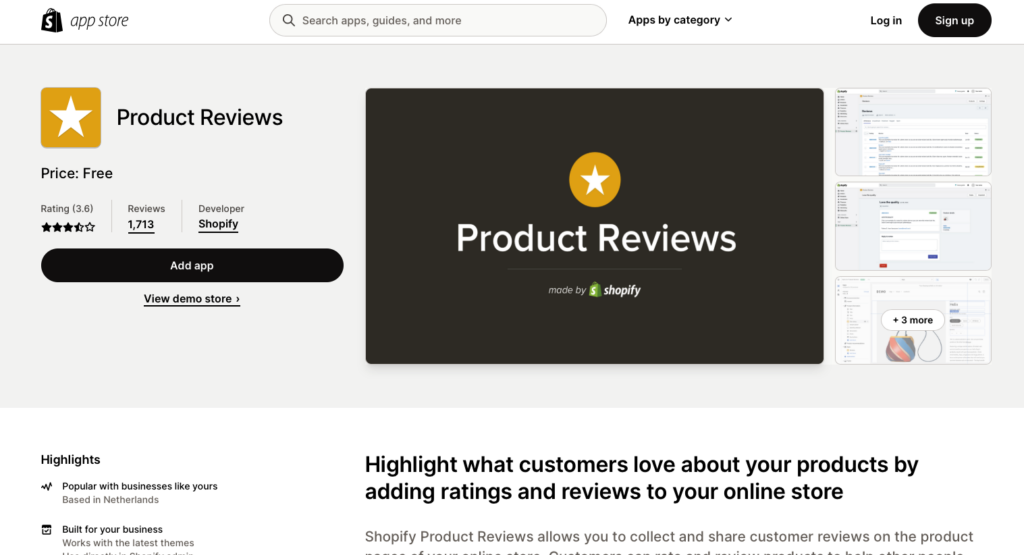
Product Reviews is a Shopify app that enables customers to leave reviews, ratings, and photos of products. It offers features such as review moderation, email notifications, and the ability to display reviews on product pages, making it a great tool for businesses looking to leverage UGC.
Judge.me
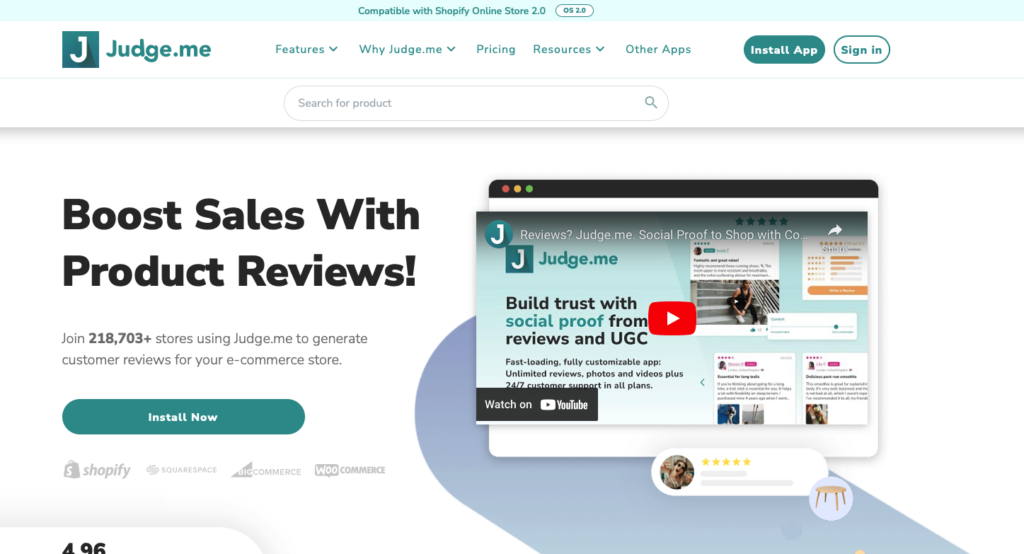
Judge.me is a Shopify app that enables customers to leave product reviews, ratings, and photos. It offers advanced features such as review request templates, email reminders, and review moderation tools, making it an excellent tool for businesses looking to leverage UGC.
For the complete list of the best product review apps for Shopify, please read this article.
Summary
UGC is a powerful marketing tool that can help brands build trust, increase engagement, and promote their products or services.
By encouraging and leveraging UGC, brands can create a sense of community and show that they value their customers’ opinions and experiences.
It’s important to have a clear strategy in place, align UGC with your overall marketing goals, and ensure that the content is authentic and provides value to customers.
Implementing a successful UGC marketing campaign requires creativity, dedication, and the ability to engage with customers in a meaningful way.
Brands that succeed in UGC marketing will not only increase their reach and customer engagement, but also benefit from increased customer loyalty and advocacy.
With the right approach and the right tools, UGC can help brands to reach new heights and establish a strong, positive presence in the market.
FAQ: User-generated content guide
What is user-generated content marketing?
User-contributed content marketing is a marketing strategy that involves encouraging customers and fans of a brand to create and share quality content (such as reviews, photos, videos, etc.) related to the brand or its products/services.
This type of content can be leveraged by the brand for promotional purposes on multiple marketing channels.
What is a UGC strategy?
A UGC (User-Generated Content) strategy is a plan for how a brand will encourage, collect, and use content created by its customers, fans, or community.
It typically involves setting goals, identifying the target audience, choosing appropriate platforms and incentives for content creation, and determining how the collected content will be moderated, curated, and utilized. The overall objective of a UGC strategy is to increase engagement and advocacy with the brand, as well as to provide a source of authentic, social proof for potential customers.
Why do brands use user-generated content?
Brands use consumer-generated marketing for several reasons, including authenticity, increased engagement, social proof, cost-effectiveness, increased reach and visibility, enhanced customer relationships, improved SEO and website traffic, increased brand loyalty, and better understanding of customers and market trends.
Which are examples of advertisers using user-generated content in their commercials?
Many advertisers have used user-generated content in their commercials to showcase the experiences and opinions of their customers.
What are examples of UGC? Some of them are as follows:
- Coca-Cola: In their “Share a Coke” authentic campaigns, Coca-Cola encouraged customers to share photos and personal messages on social media using custom Coca-Cola cans. The company then used some of these user-generated posts in their commercials to show the fun and social aspects of drinking Coca-Cola.
- Nike: In their “Play For the World” campaign, Nike invited customers to submit short videos of themselves playing sports, which the company then edited into a montage and used in their commercials to show the global community of Nike fans.
- Old Spice: The Old Spice “The Man Your Man Could Smell Like” campaign was built around user-generated content, featuring real customers sharing their experiences and opinions of the product in a humorous and light-hearted way.
These are just a few examples, but user-generated content has been widely used by advertisers across many industries and brands.
How to start UGC marketing?
To start UGC marketing, follow these steps:
- Identify your target audience: Determine who your target audience is and what they want to see.
- Set goals and objectives: Define what you hope to achieve with your UGC marketing campaign.
- Choose the right platforms: Decide where your target audience is most active, such as social media platforms, forums, or review sites.
- Encourage user-generated content: Use incentives, contests, or campaigns to encourage customers to create and share content about your brand.
- Monitor and curate the content: Regularly review and curate the content created by your audience to ensure it aligns with your brand image and values.
- Engage with your audience: Respond to comments, answer questions, and engage with your audience to build a strong relationship with them.
- Measure and evaluate your results: Use analytics to track your progress and evaluate the success of your UGC marketing campaign.
What is a UGC influencer?
A User-Generated Content influencer is someone who has a large following on social media and regularly creates and shares content that is relevant to a particular brand or industry. This content can include photos, videos, customer reviews, and testimonials and is often used to promote products or services.
Brands often work with UGC influencers because they have a high level of credibility and influence among their followers.
By leveraging user-generated content influencer marketing, brands can leverage their reach and engagement to promote their products or services in a more authentic and relatable way.
Is UGC good for SEO?
Yes, UGC can be good for search engine optimization. There are several ways UGC can help improve a website’s SEO, including:
- Fresh and relevant content: Search engines favor websites that regularly publish fresh and relevant content, and UGC can help provide this.
- Increased engagement: User-generated content often generates more engagement and interaction than other forms of content, which can help improve a website’s overall engagement metrics and signals to search engines that the content is valuable.
- Backlinks: If UGC is shared and linked to from other websites, it can generate backlinks to your website, which can help improve its authority and search rankings.
- Keyword-rich content: UGC often includes keywords and phrases related to your products or services, which can help improve your website’s relevance for these keywords.
- Social signals: User-generated content that is shared and engaged with on social media platforms can help improve your website’s social signals, which are increasingly being used by search engines as a ranking factor.
Can user-generated content hurt your SEO?
Yes, UGC can potentially harm your search engine optimization (SEO) if it is low-quality, irrelevant, or spammy.
Why is user-generated content is taken more seriously by consumers?
User-generated content is often seen as more credible and trustworthy by consumers because it comes from peers and everyday people rather than businesses or organizations with a vested interest in promoting their products or services.
Additionally, UGC provides a more authentic and genuine perspective on products or services, as well as a sense of community and social proof.
This can lead to stronger customer relationships and increased brand loyalty between consumers and the brands they follow.
How do you measure “quality” when it comes to user-generated content?
Measuring the quality of UGC can be a subjective and complex task, as it depends on several factors, such as the purpose, context, and audience of the content.
However, some common metrics used to evaluate UGC quality include:
- Relevance: Does the content align with the topic, theme, or purpose of the platform?
- Engagement: How many users interact with the content, such as liking, commenting, or sharing?
- Accuracy: Is the information in the content accurate and credible?
- Creativity: Does the content stand out and offer a unique perspective or original ideas?
- Authenticity: Does the content feel genuine and reflect the author’s own thoughts, experiences, and opinions?
- Value: Does the content add value to the platform and its users, such as providing educational, entertaining, or informative content?
- User feedback: Are users providing positive or negative feedback on the content?
What is a UGC creator?
A UGC creator is a person who creates content, such as text, images, videos, and audio, for digital platforms like social media, websites, and forums.
This content is created by users and can range from personal experiences to opinions, reviews, and more.
The term “UGC creator” generally refers to individuals who consistently produce and share content for a particular platform or community and who may have a significant following.
____
Sources:
- Nielsen (2019), “Global Trust in Advertising Report”
- TrackMaven (2016), “The State of Social Media Marketing 2016”
- Backlinko (2018), “The Power of User-Generated Content for SEO”
- InMoment (2020), “The Power of User-Generated Content in Driving Customer Satisfaction”
- Forrester (2017), “The Power of User-Generated Content”
- AdWeek (2016), “Consumers Trust Friends More Than Brands, Study Finds”
- BrightLocal (2018), “Local Consumer Review Survey 2018”
- Yotpo (2019), “The State of Member-Generated Content 2019”
- Curalate (2017), “The Power of User-Generated Content”
- Lithium (2015), “The Power of Consumer-Generated Media in Driving Business Results”
- Salesforce (2018), “The Power of User


